Votre panier est actuellement vide !
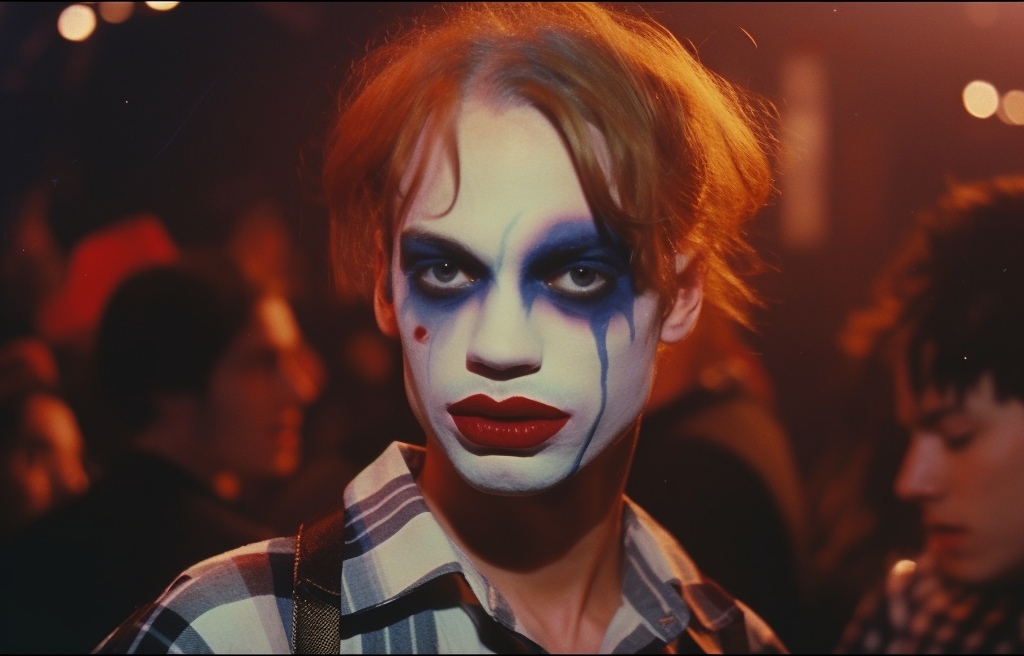
The Legacy of The Party Monster
Can New York Ever Process The Life of Michael Alig
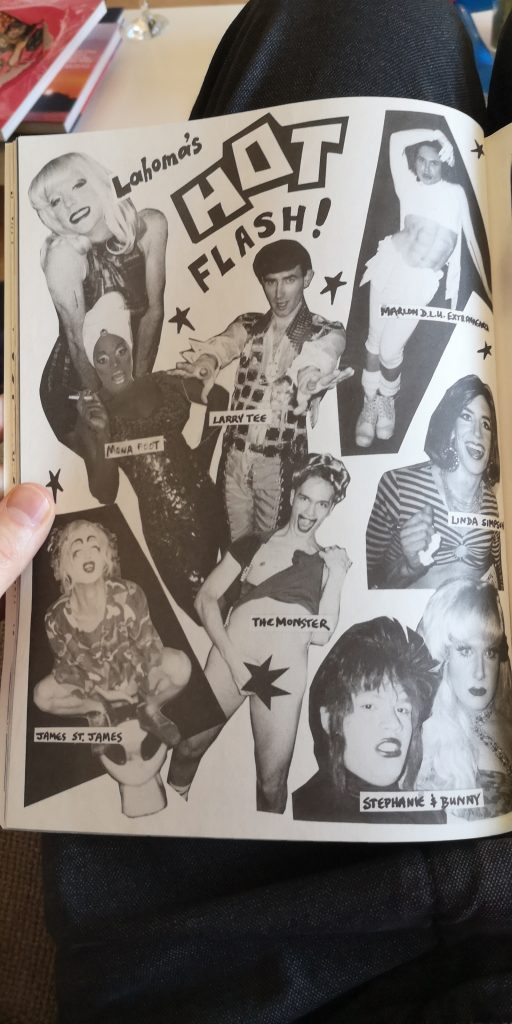
A great party ended when Michael Alig, the notorious New York Party Maker, descended to hell and went too far for the glam. A self-proclaimed drug addict, notorious for his antics and parties, he, at the head of the Club Kids, would revolutionize the art of partying in New York forever before falling into disgrace after the murder of Angel Melendez, his drug dealer, and fellow club kid. Never before had a group of young people had such an impact of such a scale on the culture of nightlife in New York. The Club Kids made an impact that resonated on national television and in the clubs. Nevertheless, the fall of Michael Alig and the aftertaste of his antics left a grim shadow over the sparkling scene he helped create. To this day, we don’t know what to make of his legacy. Imprisoned for most of his adult life (17 years), he would later die from a drug overdose on Christmas Eve, right in the midst of the COVID pandemic. How can New York process the life & death of one of its most prominent and infamous party icons?
Beauty in the Beast (An inconvenient truth)
The great dilemma with the legacy of Michael Alig is the inherent positive aspects of his influence. On many levels, what he did was for people to enjoy. I mean, the essence of a party is to be enjoyed collectively; you don’t party alone. Another great dilemma is that something that once started as a good thing—his unapologetic antics and attitude—became something very bad.
How can we reconcile embracing the heritage of one of New York’s most prominent party makers and yet acknowledging, at the same time, the terrible things he has done, which include manipulation, preying, and eventually murder?
For the first, we must recognize and appreciate his path towards success and positivity.
An undeniable walk of success (His accomplishment)
For starters, Michael Alig’s Disco 2000 is the stuff of legend. The magnitude (around 2000 people each week, on a Wednesday), the frequency, and the cultural impact his scene had are legendary: a perfect score in terms of party making. The Club Kids scene gave birth to a significant number of cultural icons, including fashion, music, and people. For example, RuPaul, who was already a relevant artist in the ’80s, had a significant rise to fame by hanging out at Michael Alig’s party. Even though they apparently hate each other, Alig provided him with many work opportunities that helped advance his career.
An important example of Disco 2000’s magnitude was the cover charge people accepted to pay to get in. People were paying $20 to get in, in 1991. To put things in perspective, that equals a $45 cover charge in 2023. And, mind you, he was only 23 when the party started. That party lasted almost 7 years.
That is A LOT.
The Club Kids : A Scene that took over New York
One great aspect of Michael Alig’s legacy was that he was not alone; he was an aggregator of multiple interesting characters. From Peter Gatien, but also the many eccentric characters, fellow ‘club kids’, surrounding his parties, it wasn’t long before a lot of the clubs in New York emulated the vision and proposed their own take on the scene. The crazy looks, the drugs, the insatiable appetite to go beyond limits transposed in music, attitude, and originality around the city. That magnitude of success was so significant that Michael Alig, fueled by Peter Gatien, started organizing events at his other ‘mega’ clubs: The Palladium, Club USA, and The Tunnel. Before the age of 30, Michael Alig helped shape and define the vision of the ‘Club Kids’ but also promoted it and shared it all over New York City, the USA, and yet, the world.
The Vision : Having a lasting was the plan right from the start

When asked if he knew the Club Kids were going to be so legendary, Ernie Glam answers that it was their vision from the start. They knew from the beginning that they wanted to go as extreme as possible to leave their imprint on New York. It was their plan, and that is what they did. It is interesting to see a group of people having, at such a young age, a plan to change the world and following through with it.
Gays & Trans People on Mainstream Television

At a time when Andy Warhol never publicly acknowledged his homosexuality, Michael Alig was telling everybody in a very unapologetic way. Not only did he use that to promote his party, but it was also a way to celebrate his community. But he did more…

A « freaky » television run
In 1991, Michael Alig’s mainstream talk show appearances, featuring ‘freaks’ for views and publicity for his parties, are undeniable. Nevertheless, doing so had one understated effect: it was probably, for most ‘young Americans,’ the first time they saw gays & trans individuals in their life actually proud of who they were. Because that was his whole motto: being freaky, unapologetic, and proud of it.
On the same ‘Richard Bey’ show in 1991, we see two great examples of the latter. The presence of a young Amanda Lepore is a powerful statement for trans visibility. After being asked if she is male or female, she simply stated that she is the ‘idea of woman.’ How groundbreaking was that? This was on mainstream television, 20 years before gay marriage was legal in New York and two years before RuPaul’s performance on SNL in New York with Nirvana. The number of continuous times Michael Alig was on these shows leads to the belief he was behind these appearances.
Interestingly, on that same show, in the same episode, when being asked if they are gay, none of the panelists answered in the positive, revealing the taboo nature of the subject. However, things would change radically the more the Club Kids went on TV: they made being gay very cool and unapologetic. They would talk about crowds in clubs and mention on more than one occasion ‘not everybody is gay,’ but a lot of them are.
The Club Kids did make it to the mainstream, and there was no ‘before.’ On a last note, Michael Alig was outed by Geraldo in 1990 on his show.
https://youtu.be/NRTNy_PuEOk
A honorary and legacy maker

One of the great aspects of ‘The Party Monster’s’ legacy was his aptitude to honor his predecessors, and not only the ones from New York City. A prominent group prior to the Club Kids were the Blitz Kids from London. Revolutionizing the art scene of London, they galvanized the ‘New Wave’ looks and music, brought classics to the world like Visage (‘Fade To Grey’), Boy George and The Culture Club, and hung out with Bowie while he was at his peak (Ashes To Ashes Video). This group also included Leigh Bowery (above on the right), a fashion icon that shaped nightlife looks forever. Boy George was a regular at Alig’s party, and the latter made sure to unlock the budget to have his good friend, Leigh Bowery, perform in New York. In doing so, he kept alive, relevant, and promoted an honorary part of nightlife culture, even if it came from another country. At such a young age, his role in keeping the culture alive is undeniable.
Celebrating American Culture
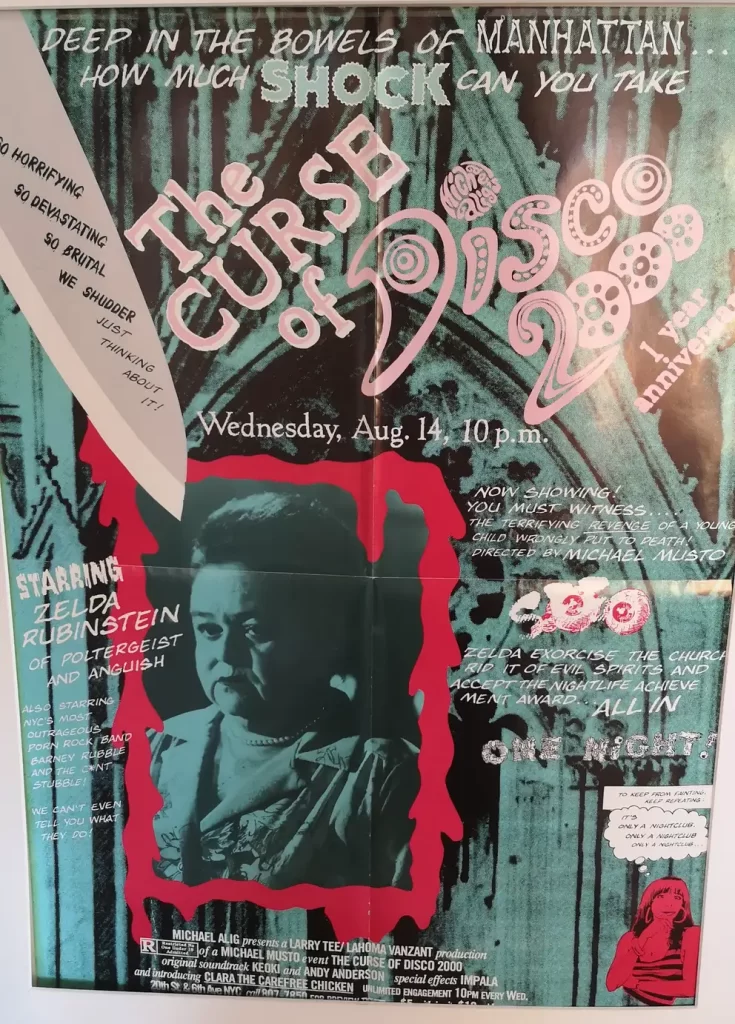
Andy Warhol celebrated American culture when nobody did it before him. His pick on ‘Coca-Cola,’ a drink that was as good no matter how poor or rich you were, was a great take on defining the inherent qualities of American culture: accessible to everyone. On numerous occasions, Michael would invite old TV and movie stars to host his parties.
His posters would also often reference American culture, TV, and more but with a ‘twisted’ twist. Nevertheless, it showed an appreciation for American culture that was palpable and contagious. It made American culture look cool during an era when it was at the top of the world.
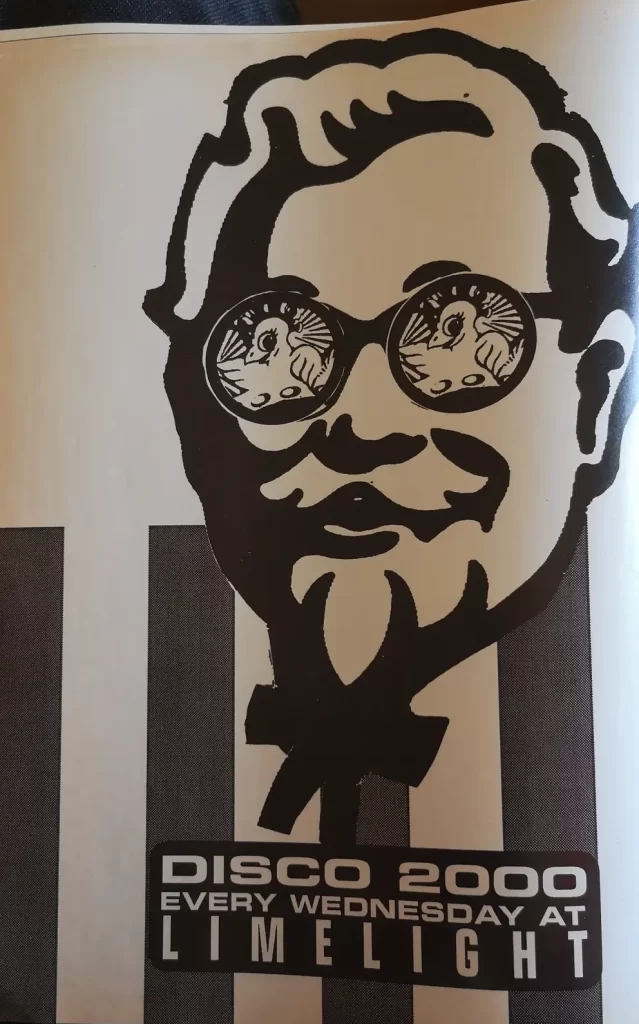
Perpetuating a Tradition Created at Studio 54: Exclusion at the Door
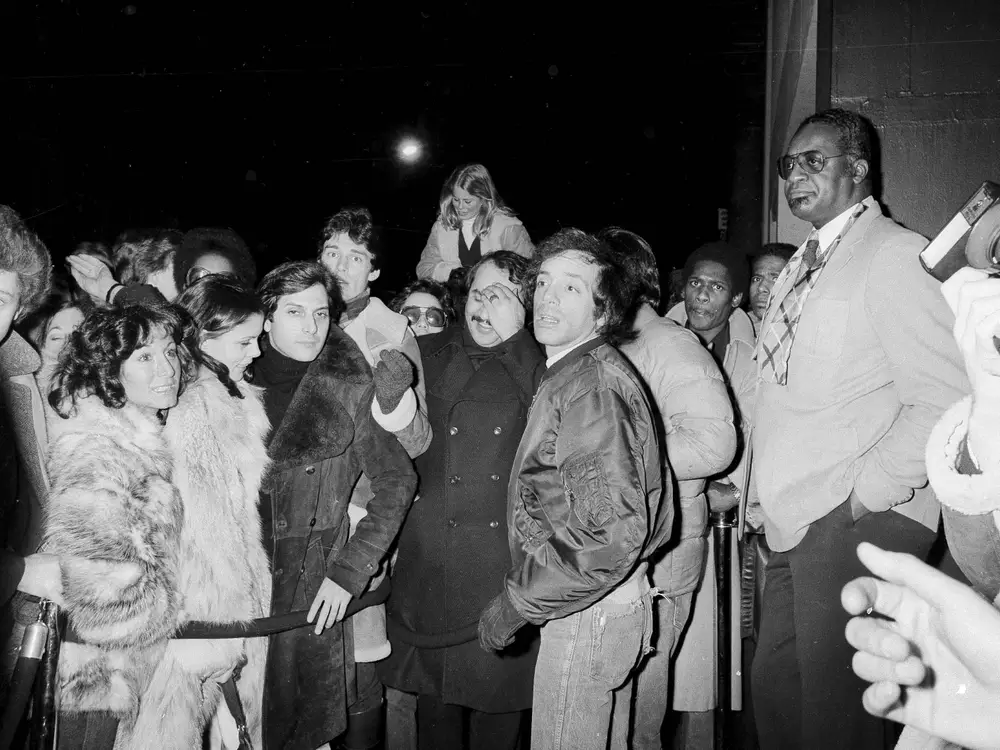
One of the great traditions of New York that made the city what it is, was that infamous tendency to be too cool to let normal people in. Steve Rubell, the man behind Studio 54, was notorious for this behavior and his unapologetic attitude about it. Michael Alig did honor that tradition but, instead, put his ‘freaky friends’ in positions of power at his clubs: the doors. He would then make sure to keep that ‘New York spirit alive’ by ensuring his friends were watching so that your average Joe Blow did not enter the club, thus maintaining the relevance and organic aspect of the crowd inside. Yet, 2000 cool people on a Wednesday did get in. Somewhat saying ‘no’ to certain people meant that a lot more could have fun inside.
Sharing the Recipe: The ‘ABCs’ of a Great Party
Like it or not, Michael Alig knew the recipe for a great party like no one else. He talked about it relentlessly and shared his tips on numerous occasions to showcase his visions behind his parties. It was something that made him proud. For any party organizer, this knowledge is gold. Organizing a party is an art, and he was, factually, one of the most prolific artists of the last century in that category. That gave him an outlook on popular culture that few had, but he gladly shared his thoughts and visions about it. That is precious knowledge for anyone trying to keep the party happening. Michael Alig did share much about his personal life, but he also shared about his professional life, and party promoters will forever keep his outlook on nightlife as guidance.
The Club Kids: An Influential Group of Pals

The ‘Club Kid’ scene around Michael Alig was instrumental in defining the look, attitude, and glory days of the 90s. His friends were ‘it,’ as people would look up to them for ideas, influence, and a general sense of freedom. The Club Kids’ parties were filled with characters that transcended into pop culture on levels you might not immediately imagine.
The Marilyn Manson/Walt Paper Case
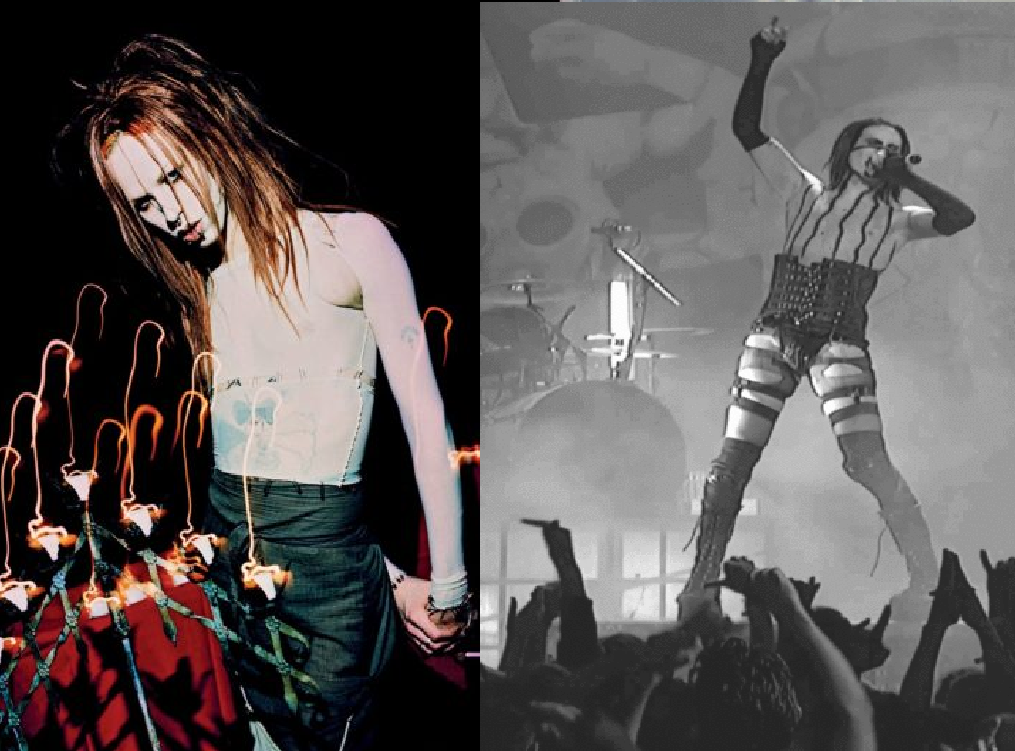
Walt Paper is one of the most prominent club kids, notably famous for his raunchy, trashy yet refined look. Marilyn Manson has been an open advocate of the club kids from the ‘get-go.’ His famous song ‘Lunchbox’ is an ode to that singular artifact club kids would carry—drugs around. Later in the decade, the looks of Marilyn Manson became more and more extreme, yet they follow the same path and androgynous aesthetics of the looks of Walt Paper. When you compare them both on multiple occasions, it is obvious. This is a first instance of the influence of the Club Kids on popular culture.
The Lady Gaga ‘Fame Monster’ Album & Kenny Kenny

There is a later comparison also between Lady Gaga’s ‘Fame Monster,’ which came out in 2009, and the club kids. First, the cover, as Michael Alig shows in a Facebook post, with the look and the wig, is a direct homage to Kenny Kenny’s look. Also, unnoted in his post, the name ‘Fame Monster’ is eerily resembling the ‘Party Monster’ name that came out six years ahead of Lady Gaga’s album. Lady Gaga is a creation of New York that has always honored the Club Kids.
Madonna’s Odd Spiritual Journeys and DJ Keoki’s ‘All Mixed Up’ Cover

This one could be a bit more far-fetched, but it is still interesting that Madonna’s spiritual awakening and dips into oriental spirituality occurred just years after it became trendy among the club kids. For example, the song ‘Shanti/Ashtangi’ is a Hindu prayer, and DJ Keoki’s posture is a reference to the Hindu goddess Shiva. Keoki’s picture came first. The ‘Ray of Light’ is so New York. It would be possible to say that Madonna was inspired by what was cool in that scene at that moment, which were the spiritual oriental things.
A Grown-Up Look at the ‘Club Kids’ Journey
A common theme is that they were very close to the culture that transcended into the mainstream. You also have to remember that all these people were under 30. I mean, Michael Alig was only 1 year older than Kurt Cobain, and by 1995, he was already out of it.
Conclusion: His Positive Impact is Hardened in Facts
Michael Alig did host great parties that shaped the nightlife of New York. He also played a significant role in promoting, on a mainstream level, the ideas of queerness and gender bending. New York remains a place of culture and music that still resonates with today’s antics. His unapologetic attitude reverberated worldwide, resulting in lasting influence over mainstream culture even 20 years after he started. The cultural impact of the ‘Club Kids’ as a whole is probably one of the greatest, if not the greatest, comparable to Warhol’s Silver Factory era. Let’s not forget that Moby, at some point, was a Club Kid, and his music shaped the latter part of the 90s. And all of this was accomplished before the age of 30 years old. What a winning streak!
vs
The Downward Spiral: An Era of Decadence (1995)
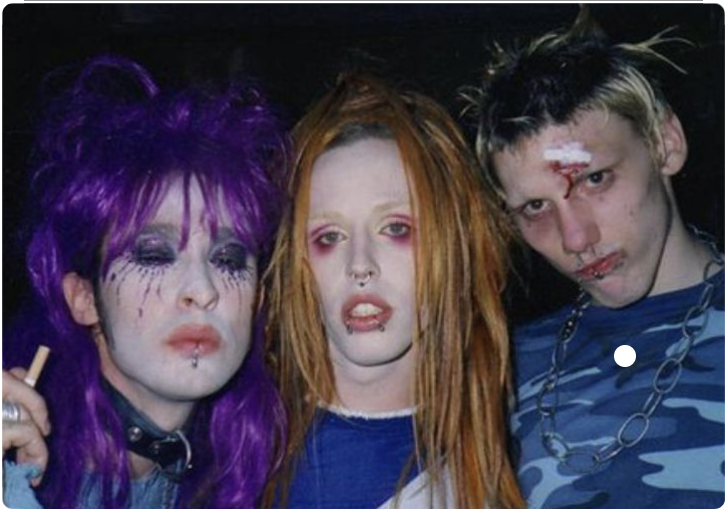
When you look at the mainstream success of American culture in the 90s, there is a common denominator that only grew bigger until the ‘2000 bug’: the apocalypse. Put it in Fight Club, Kurt Cobain, Californication, Marilyn Manson, Columbine, The Simpsons, Alexander McQueen, the ‘Heroin Chic’ look, The Prodigy’s ‘Firestarter,’ Nine Inch Nails’ ‘The Downward Spiral,’ Radiohead’s ‘OK Computer,’ Trainspotting, there was this sense that society was falling, and art was an outlook that expressed this walk towards the end with rebellion, wit, apathy, and extreme gore. Marilyn Manson’s ‘Antichrist Superstar’ is probably the pinnacle, and Columbine, the horrible aftermath. Meanwhile, Michael Alig’s magazine ‘Project X’ was putting ads of ‘CRACK’ next to Armani ads. Where could it go wrong from there?
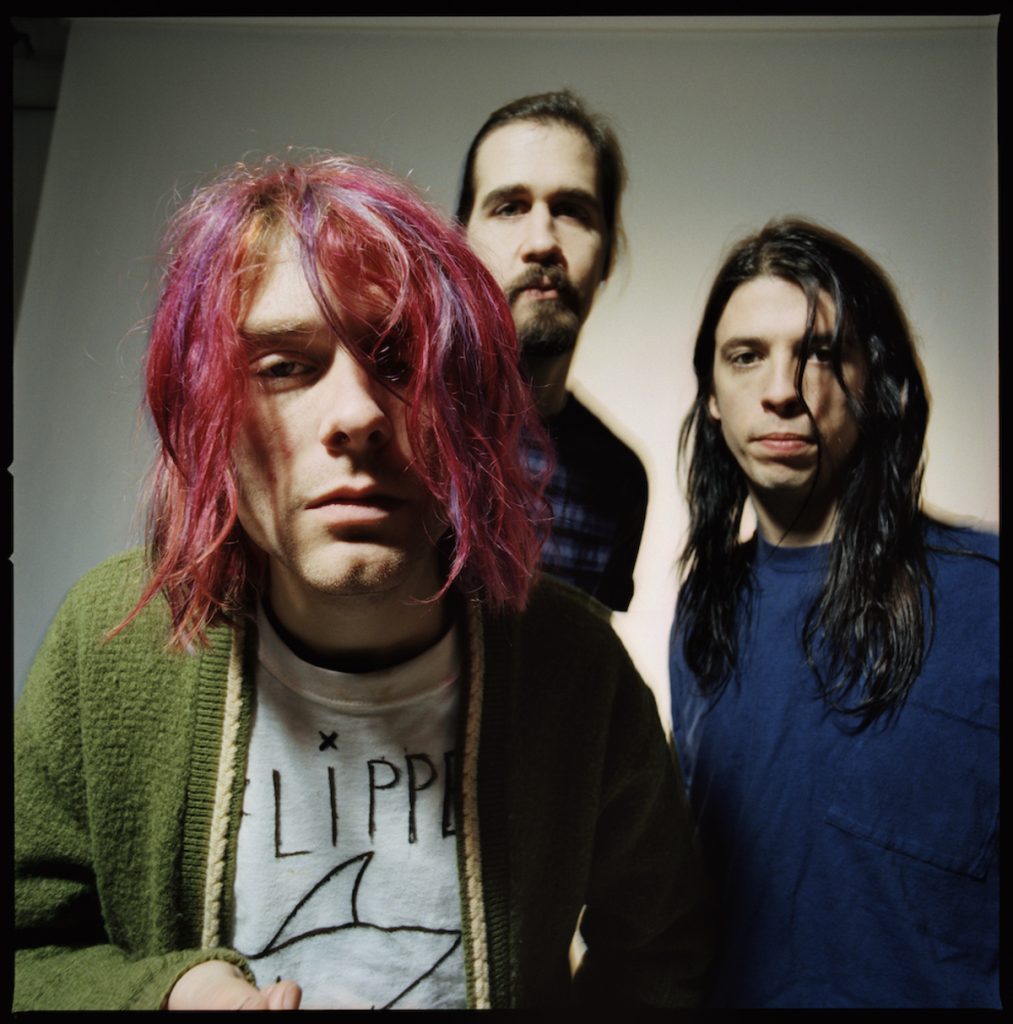
Kurt Cobain’s 1990 lyrics still resonate as the best expression of the feeling of the early ’90s:
‘Load up on guns (drugs), bring your friends
It’s fun to lose and to pretend
She’s over-bored and self-assured
Oh, no, I know a dirty word
Hello, Hello, How low’
This is Nirvana’s infamous Saturday Night Live 1992 photoshoot. Kurt Cobain was reportedly high on heroin during that photoshoot that nevertheless became iconic.
This romanticism of the descent into hell is a staple of the mainstream stars of that time. In fact, Courtney Love didn’t seem to have such a great time the year she was the most relevant (1995) as ‘Live Through This’ came out 3 days after her husband, Kurt Cobain, took his own life after ‘loading up on guns.’ But the general audience was always asking for more. This bloodfeast of drug days had a cost. Lives were lost even though it created art that had a lasting impact on the world.
But, wait a minute: Why Is This Important?
It puts a context around these bad behaviors and the prior lack of consequences around them. Even worse, they were rewarded for being rebels and outlaws. Remember, all those people were under 30 at the time and on top of the world. This kind of fame has been rarely seen before at that magnitude, and it is no surprise to see so many of these young stars burn in flames.
So how do we process?
As a society, we need to establish values and principles to guide us in separating the good from the bad. The problem with Michael Alig’s life is that, as much as he was respected by party organizers and socialite circles, his personal life was filled with drama and deceptiveness to the point of no return. To process the legacy of the ‘Party Monster,’ we must now acknowledge the facts and his responsibility in his descent to hell. So, we saw the light and the glitter; now let’s dive into the darkness.
Separating the Beauty from the Beast: Making the Party Monster
Fame, money, and success have a price that fame, money, and success can’t pay: your sanity. Michael Alig probably had all the issues to become who he became. But it is clear that at the level of success, madness, and pressure he was at, things could get really dark, and really fast. At the dawn of his thirties, he would fall from grace and would then be in jail for most of his life.
A Glamorous Descent to Hell
Kurt Cobain said that after becoming a rock star, he decided to become a junkie and live the ‘sex, drugs & rock’n’roll’ lifestyle he always read about. It does feel he was not alone as many of his colleagues at the time experienced the same madness. A great example of that motto in Michael Alig’s life is the more and more extreme looks he had on his television show run. By 1995, wounds and hypodermic bruises were the new chic. Did someone mention ‘Heroin Chic’: the négligé look of the 90s?
Part of our culture is built around icons indulging in astronomical self-indulgence and extravaganza, watching them burn in glory until it is too late. The 00s had the Barbie icons (L.A. Socialites à la Britney Spears) and the Camden druggies (Amy Winehouse & Pete Doherty). Those glamorous descents to hell made great documentaries, and the people in them were, initially, rewarded for such bad behaviors with ‘fame, money, and success’ and became the ‘it’ thing of the moment. At such a young age, these kids would soon fall.
A Fallen Monster: The Inevitable Creation and Monetization of a Myth
Following Kurt Cobain’s quote’s meaning, there is this sense in Michael Alig’s life that he became the myth he was portraying ahead in his art. The Bloodfeast, the decadence, the Monster were all themes he portrayed ahead of his infamous and REAL fall from grace. Then what happened? His friend wrote a book about him that became a cult classic. ‘The Party Monster’ myth was born into modern culture. Mind you, the price he paid was high. For his crime, later described, he spent 17 years in jail, and 5 of them ALONE in solitary confinement, which he only got out of after he attempted suicide. He later revealed that the movie did screw his chance of being released on parole as it portrayed him in a very nefarious way.
Drug Usage: Hitting the Point of No Return

Like in mythology, there was a tipping point where the naive boy became the villain that can never be redeemed. For Michael, it was in the form of Angel’s drugs. Prior to his crime, Michael Alig was a self-proclaimed drug addict who had a tumultuous daily habit that included heroin, ketamine, crack, rohypnol, and more. The effect of his lifestyle made sure he would stay awake for days at a time and be transposed into this paranoid world of altered reality. He was drug-savvy and frequently used people to get to the drugs. If the ‘Party Monster’ book is real, it does seem it was a glamorized habit in the scene to ‘use’ people for drugs.
Angel seemed to have been an impressionable kid who tried unsuccessfully to lure his way across the top of the social hierarchy, notably by charming his way with drugs. Very ‘generous,’ it seemed he had given Michael Alig a pass on thousands of dollars worth of drugs. His status as King of the Club Kids probably did play a role. Again, Angel was in his twenties, which is very young and naive. Nevertheless, this pass should have been a big red flag for the price he was going to pay later…
Let’s fast forward to a 1996 when all of Peter Gatien’s clubs were under scrutiny for drugs by the FBI. Angel, a drug dealer, is barred, from entering the club in front of his friends. Angel is not being told why. The humiliation is palpable; the spell is broken. It is too much. The same night, he goes to Michael Alig’s appartement, very high, and confronts him. Michael, who did not have the money to pay him, gets pushed by Angel. A fight ensues that changed the Club Kids’ scene forever … Angel is dead.
It gets darker…
In some twisted logic, the altercation and its consequences could have been lessened as he was attacked by Angel, defended himself, and it turned bad. Had he called the cops and didn’t put a pillow on Angel’s face, who was apparently still breathing after the fight, maybe a slight redemption path could have saved the situation.
Had he called the cops and confessed to his crimes to authorities, maybe he could have saved his soul. But, according to Freeze’s confession, this is not what happened.
Michael Alig chose to hide and dismember a dead body while a seventeen-year-old was living in the apartment to later use his drugs and share them with pals. #evil
In full villain transformation, Michael Alig could never recover from this.
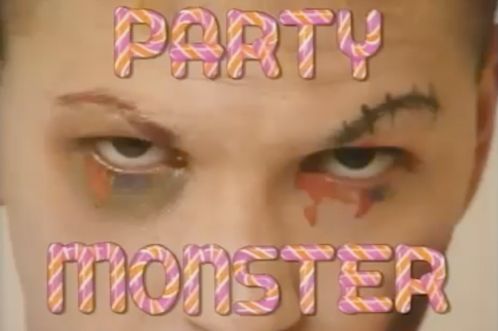
A Pattern of Ruining the Lives of People Around Him

WARNING: ROUGH DETAILS AHEAD
Yeah, so allegedly, the son of famous writer Paul Auster, only 17 at the time, was a roommate (and lover) of Michael Alig (29) when the murder and dismembering of Angel Melendez happened… Let’s just say that being present during the murder and ‘disposition’ of a dead body, at seventeen, and then, allegedly, using the dead body’s drugs is somewhat life-altering. He would die from a heroin overdose 17 years later, one day after being released from jail.
Then you have his accomplice, Freeze, from his written confession, who seems to have been caught in the situation after reacting to Michael Alig’s cries for help while being attacked. Nevertheless, he still did what he did and went to jail for it.
Then there’s this girl ‘Gitsie’ who died of a drug overdose at 22 while awaiting to be a witness in Peter Gatien’s trial. Michael Alig was 29 when he was hanging out with her and fueling her drug habit, being ‘besties’ with her, as she was only… 19. We all know New York has no heart, but this is beyond heartless. Two weeks prior to her death, she confessed what was the hardest thing to hear when he confessed the murder to her. This is heavy stuff to have around you… that girl had no role in his descent into hell, and yet she was dead after being drawn to it.
In conclusion, it does feel the private life of Michael Alig was turmoil-ed by abuse, overbearing ‘problems’ sharing,’ disrespect, ‘transactional’ love, and preying upon young people. For notable reasons, Michael Alig had bad karma and lived with it until he died.
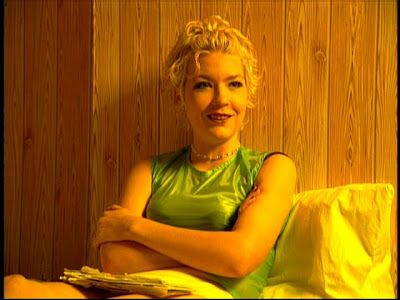
A Note on Angel
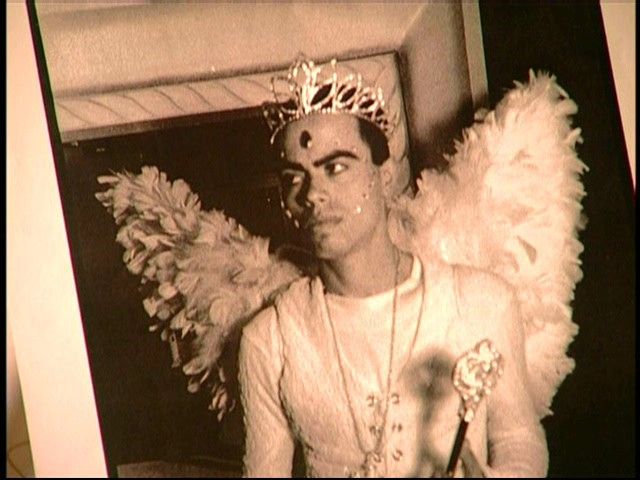
Angel’s murder seems to be the pinnacle of bad taste. Even if nothing is black or white, there is this sense of abuse and shaming towards Angel prior to the murder. Like a lot of myths, the victim was taken down the moment he realized what was going on. And that is what hurts the most in this case: the moment Angel tried to regain respect, his money back, and break free from Michael Alig, he got murdered… dismembered, hidden, and treated like his life was worthless (think about his family). It is even sadder and unfair that his legacy was now forever linked to somebody that he ultimately tried to break free from. He too became a myth: the myth of the naive victim impressed by the glitters and smothered by the emptiness of the evil kings of glamor.
A Personal Affair : a relatable story
The more I read into this story, the more I could relate to the bullying of Angel. I had been myself in the same position as Angel. Back in college, I tried to get into a select group of party people that I admired and loved. I tried to become their friends in many ways, notably by selling weed to them to charm my way in. Like Angel, they would not pay, but I did not care as I wanted to be close. I even let my stash in their group room where they would gracefully pick in it. But the more I stayed, the more I got verbally abused and made fun of. I would not leave because I was so in awe before them that I thought if I persisted, time would tell me right. I also had no idea to which extent the abuse would go: I had never been bullied in school before. In retrospective, I was unaware of what a sane relationship was. And you know…. teenagers. Though the bullying got so bad that at the end of the year, they literally wrote on a wall in school that I should die while convincing me at the same time that it was okay that they had done so when I tried to complain. That graffiti stayed there for 7 years, for everyone to read, until I found the courage to go back to that school and erase it myself! I still remember that random guy telling me, ‘Oh, it was you. We always wondered who had suffered this much…’. To this day, I still feel bad and ashamed about that time. That event still haunts me whenever I connect with cool people or feel any sense of artistic pride.
After that trauma, I did escape into the nightlife community and met my share of shady characters and transactional relations. When you are in it, you don’t realize it. It was only around 27, after I left the scene feeling empty, that I started processing. One of my bullies became a huge star in Québec that we regularly see on TV. He never acknowledged the hurt he did to me even when I tried confronting him. To this day, I wish I had known better. In a twisted manner, I don’t blame Angel for not knowing better. I think a lot of people who are drawn to the darkness of the light are usually wounded and unprepared for life without even realizing it.
By the way, I am much better now ;). I am just sad he died and did not have the chance to experience life as much as he could.
Epilogue: An Unfulfilled Legacy
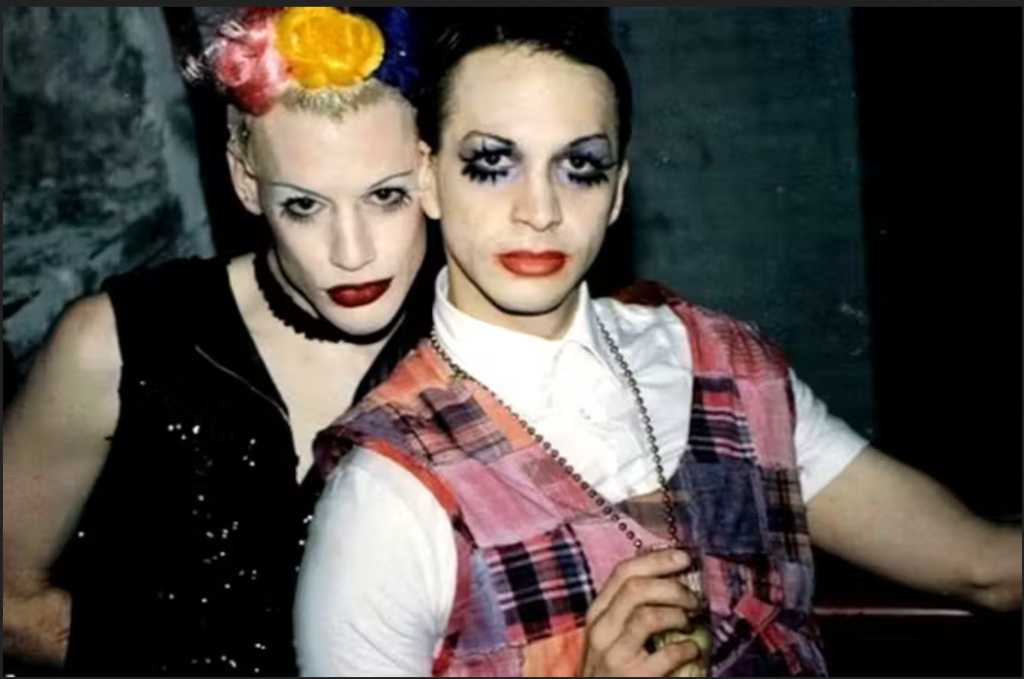
After jail, Michael was faced with a lot of opposition and backlash for his great comeback in nightlife. New York nightlife was probably not the best environment for him to show his vulnerable side and redeem himself for his past behaviors. Times had changed too: being this unapologetic kid was not so hip anymore. It was, indeed, the beginning of the “Cancel Culture”.
But to come back, he had to redeem. His attempt to come back with his “Outrage” party did not transcend into the redemption arc everybody hoped. He did manage to garner another scene of young and interesting people. But his parties, thrown on Monday nights, never garnered the same level of success as the ones in his past : people were afraid to associate with Michael Alig aka « The Party Monster ».
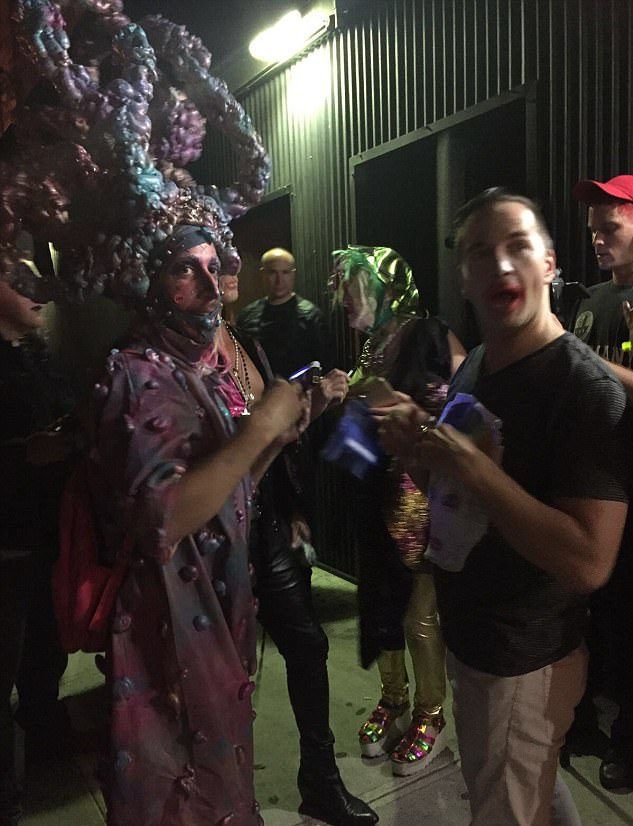
The End : Death
And then, COVID happened, and he died alone on Christmas Eve from a drug overdose. #sad
Epilogue
We never truly got to see the pain behind the mask and the intrinsic details of his traumatic relationships. This article slightly mentions it, but at the time of the murder, his former boss Peter Gatien, New York’s biggest club owner, was standing trial for drug trafficking against the FBI, and Michael was pressured to be a key witness against him. The clubs were under surveillance from Federal Undercover Agents, and, according to rumors, many inside, including Gatien, were supposedly using crack. And mind you, he was only 29… how much more intense can it get? It does seem normal that after such a high-pressure decade, 17 years in jail would be a normal trajectory to come down from so much « highs ».
Also, a great manipulator himself, he probably was facing a lot of manipulation himself from other players around him and probably made a lot of bad decisions because of poor counseling from his pals and business relations. Mind you, he was only 30 years old when he went to jail. The fact he was pressured by the FBI to wittness against his former boss who had just fired him but, nevertheless, kept a weird father/son relationship in his eyes must have been twisted. In a world of vanity where everybody is using each other, who are your real friends?
Nevertheless, he did what he did. Had he addressed his mistakes with honesty, vulnerability, accountability, and actually changed, he probably would have make it alive. But he did not. His last party called « Outrage » was « toned-deaf » when you think about villains redeeming arcs
How Do We Reconcile?
There are two perspectives to take into account: the public one and the personal one, thus those who knew Michael Alig personally and those who didn’t. For the first group, nothing in this article can heal the personal wounds someone may have after him or the great memories and souvenirs they shared with him. This article can’t do anything for them. For the rest, the outsiders, like for New York as a whole, the way to reconcile is to discern the good from the bad.
As a star only shines in a dark night, you can’t see the star without seeing the sky too. And for the legacy of Michael, we can’t embrace its light without seeing the darkness around it. For the positive, we are left with great parties, immense cultural contributions from him and his pals, an honored passing tradition of his predecessors, and a celebration of American culture. His shared knowledge of his party recipes and the tribune for the LGBTQ+ community he created left a positive impact for the general whole. The visibility and recognition from his pals and his unapologetic behaviors on national television was a breath of fresh air for a prior closeted community. He did share the spotlight with his pals and put them in positions of power to let them shine…and they did. In many ways, he changed lives of people he did not even know. For that, we can be thankful. But then, we must separate his art from the person he was around his close ones. For all the good he did, we have to acknowledge that no matter how successful he was, the price paid and the way he sacrificed, like an evil king sacrificing his « lambs » to stay at the the top, is just something evil that must be stay away from. In retrospective, don’t get too close, until the guy has his sh*t together.
Conclusion
Michael Alig, a figure often dubbed as a monster, utilized people around him relentlessly, creating a vacuum of death. However, his public persona and creative contributions left an enduring impact on New York City’s nightlife, inspiring generations to come. One could argue that the last great party era began at Studio 54 and concluded at the Limelite, as Manhattan is now dominated by dull bankers and fervent « Taylor Swift » fans. Resembling an Andy Warhol of the 90s, Alig elevated the Club Kids to mainstream stardom; a legacy that will last long after they are gone.
Surrounded by a larger community with a genuine and positive vision, Alig’s darker sides ultimately consumed him, leading to half of his adult life spent behind bars, including five years in solitary confinement.
Similar to a child resenting a narcissistic parent, New York must navigate the complexity of Alig’s legacy, acknowledging the city’s identity was positively shaped by his parties and scene. By discerning the bad while preserving the good, perhaps the city can mature and liberate itself from the shadow of its « parent. » This process may allow the era’s gloom to vanish and be appreciated without the burden of idolizing a killer, freeing everyone from the stain of infamy. Perhaps then, New York can transition to the next chapter of its party legacy, as the city is reborn. Living in perpetual nostalgia is not the answer; growth involves integrating the past and paving the way for a renewed future.
Note on the author
Hey my name is Tom Tales. A very important value in my life is fairness (libra – libra). I am also a Québécois and harmony is inscribed in our DNA like hobbits are small. I am a fan of nightlife and made this article for fun and history. This article tries to answer the question : can we recognize the legacy of Michael Alig without condoning his crimes? In short, we can do it but with great care and diligence for the victims as his contribution to nightlife was not meant to perpetrate crimes.